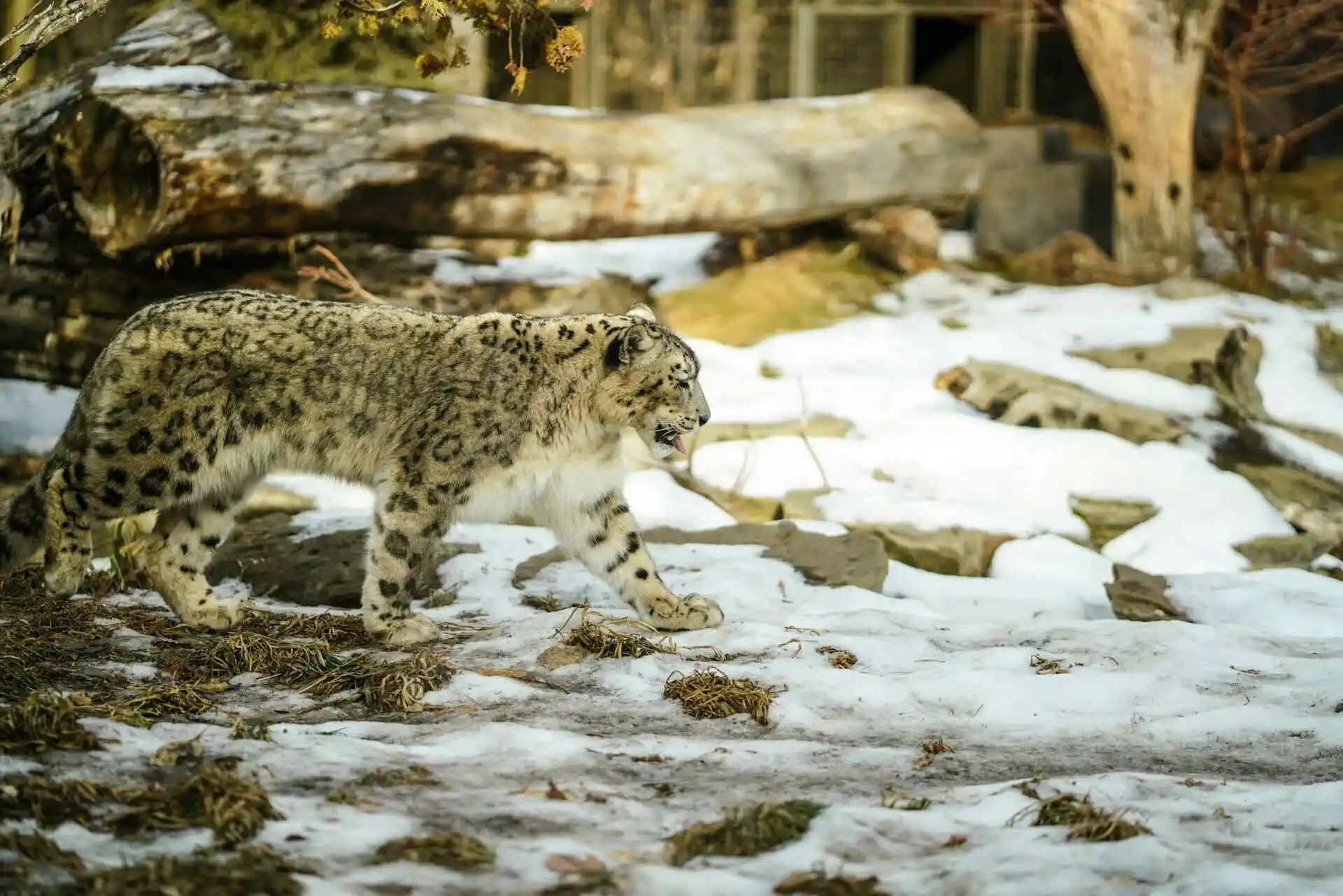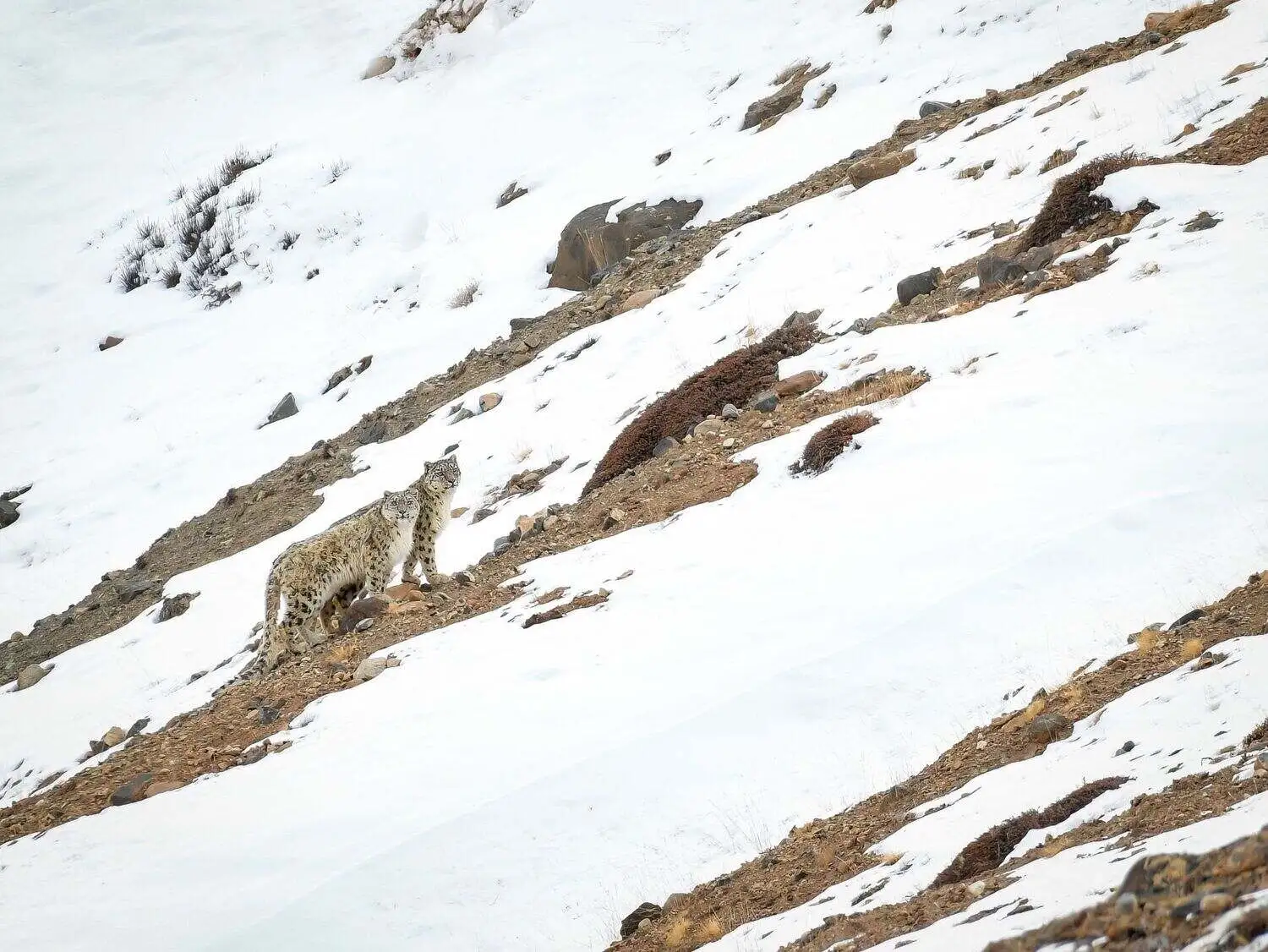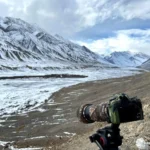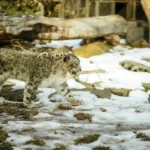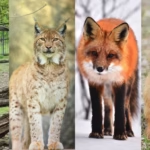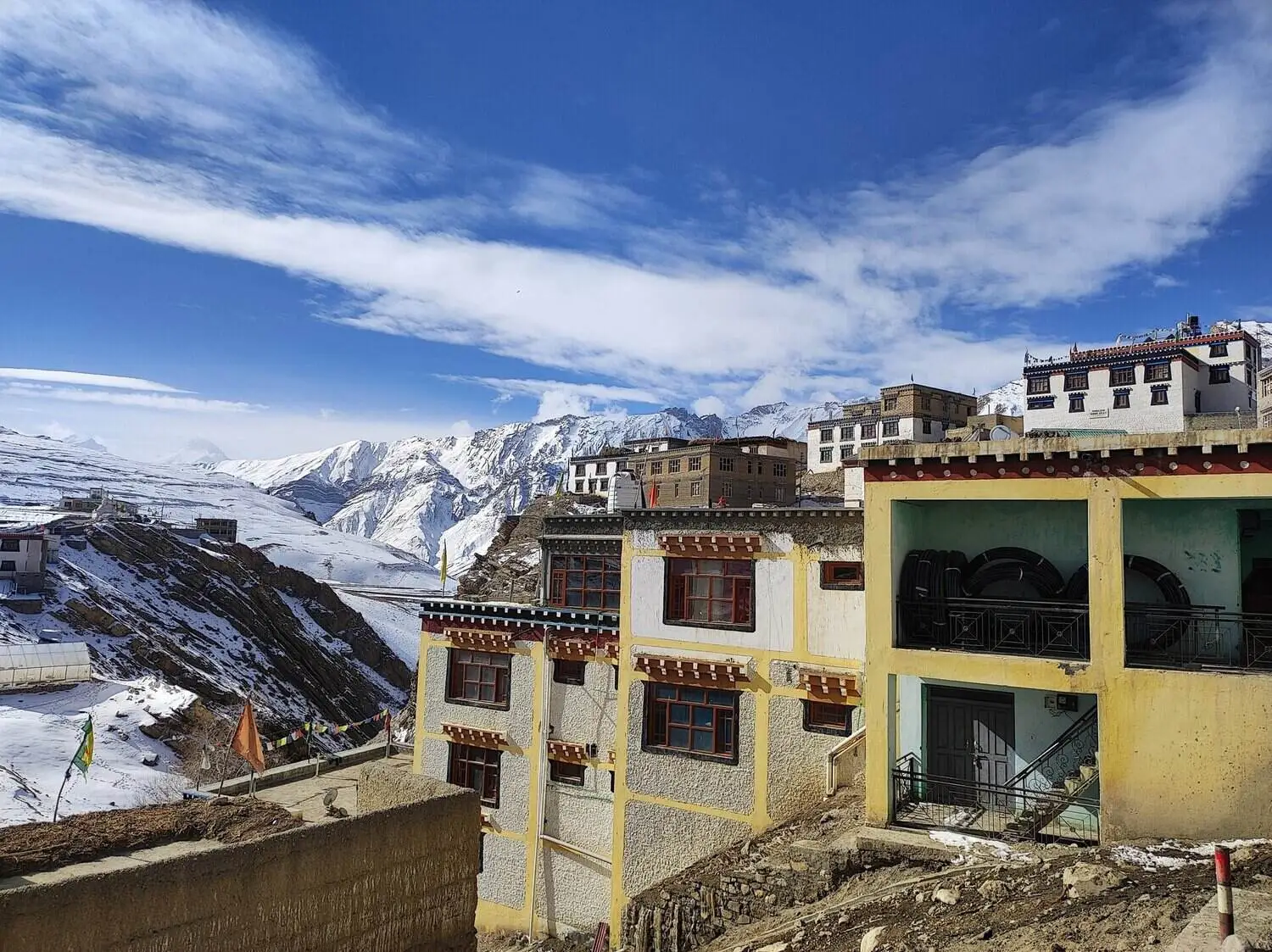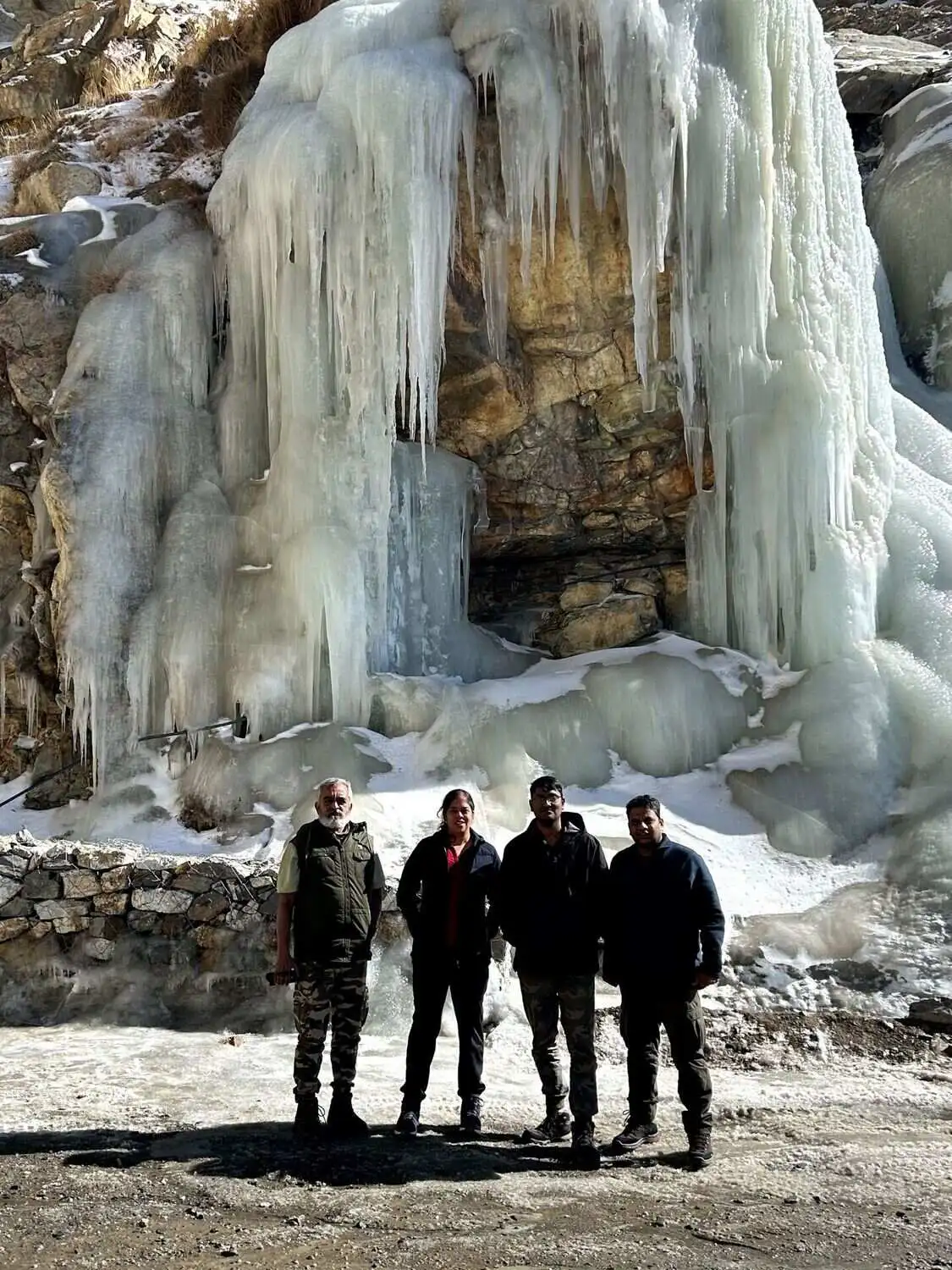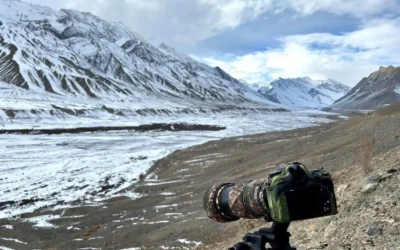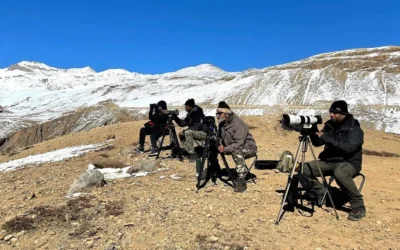The snow leopard is one of the most mysterious animals in the world. It lives high in the cold mountains of the Himalayas and is very hard to spot. That’s why people often call it the Ghost of the Mountains.
India is lucky to be home to many of these big cats. But even today, very few people have seen one in the wild. For years, no one knew how many snow leopards lived in India. That changed recently with the country’s first proper survey.
In this article, we’ll talk about how many snow leopards are in India, where they live, what problems they face, and how people are working to save them. We’ll also look at how responsible tourism can help protect this amazing animal.
The snow leopard is a beautiful big cat that lives in cold, high mountains. You won’t find it in forests or grasslands.
Snow Leopard: A Quick Profile
It prefers rocky cliffs and snowy valleys, far from people.
It has thick, soft fur to survive the freezing cold. Its coat is grey or white, with dark spots called “rosettes” that help it blend into the rocky landscape. The snow leopard also has a long, fluffy tail, which helps with balance and acts like a blanket when it sleeps.
Even though it looks strong and powerful, the snow leopard is shy and quiet. It usually hunts at dawn or dusk and prefers to stay hidden. It eats wild animals like blue sheep (called bharal), ibex, and marmots.
The snow leopard is very important for mountain ecosystems. It helps keep prey numbers in balance and shows us that the environment is healthy.
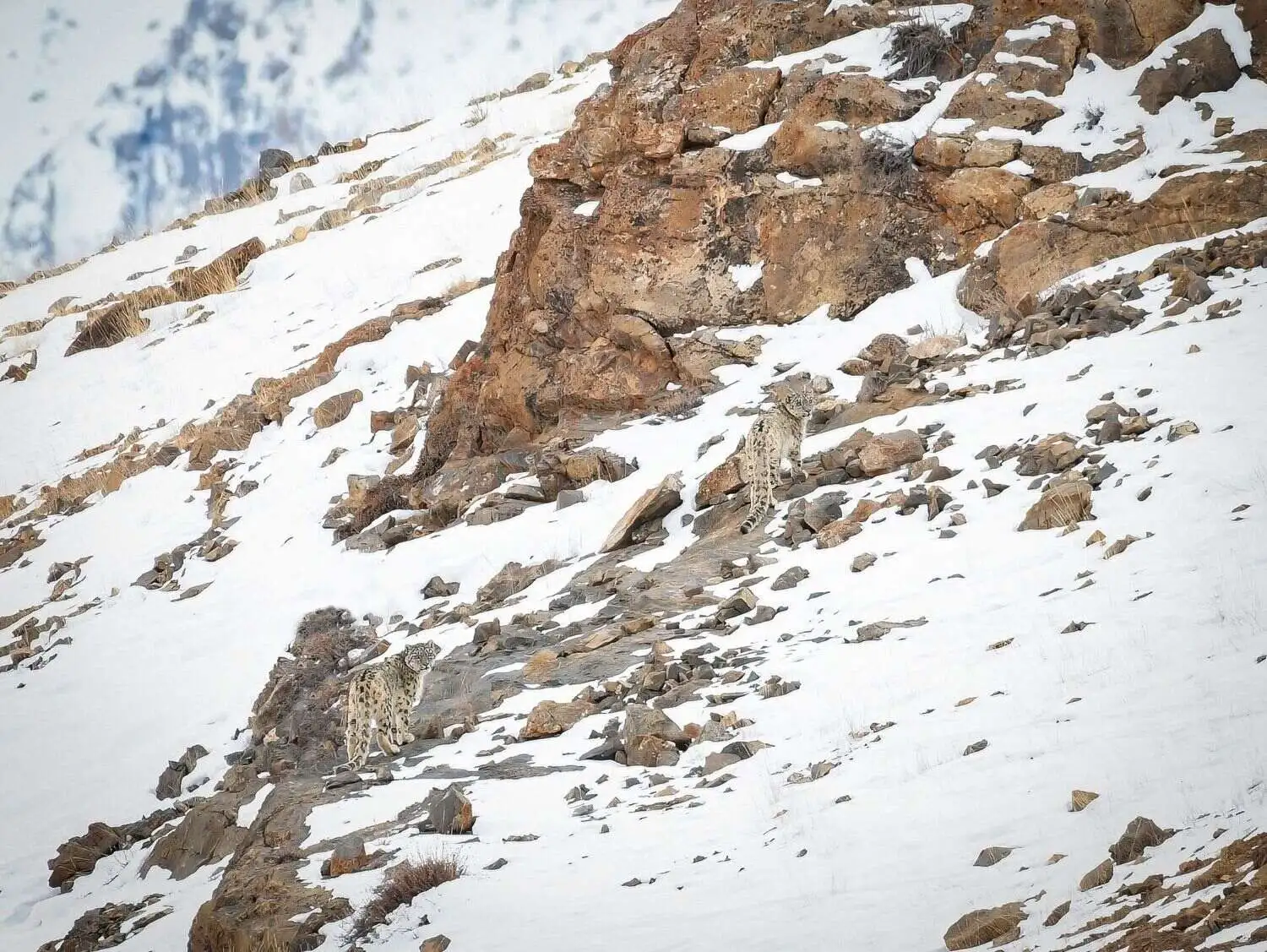
How Many Snow Leopards Are There in India?
For a long time, no one knew how many snow leopards lived in India. These animals are very hard to spot, and they live in remote mountain areas where few people go.
But in 2024, India completed its first official study to count them. This project was called the Snow Leopard Population Assessment in India (SPAI). Scientists used camera traps and checked signs like tracks and droppings to estimate the numbers.
The result? India has about 718 snow leopards in the wild.
This number is important. It gives us a clear picture for the first time. It also helps in planning how to protect them better.
Still, experts say this number could be low. That’s because many areas are hard to reach, and snow leopards are experts at staying hidden.
Where Are Snow Leopards Found in India?
Snow leopards live in the high mountains of northern India. These places are cold, dry, and full of rocky cliffs perfect for snow leopards to hide and hunt.
Let’s look at the main areas where they are found:
Ladakh (Union Territory of Ladakh)
Ladakh has the highest number of snow leopards in India. Many live in Hemis National Park, one of the best places in the world to see them. Other areas include Ulley Valley and Changthang.
Ladakh is dry, open, and has fewer trees, which makes it easier to spot snow leopards in winter.
Himachal Pradesh
In Himachal, snow leopards are mostly found in Spiti Valley, especially around Kibber Wildlife Sanctuary. This area has become popular for snow leopard tracking tours. Local villagers also help protect them by offering homestays and supporting conservation.
Uttarakhand
Snow leopards live in the high-altitude parks of Nanda Devi and Gangotri. These areas are less explored, so sightings are rare. But camera traps have shown they are there.
Sikkim
In eastern India, snow leopards live in Khangchendzonga National Park. The terrain here is very steep and covered in forests, so they are harder to study.
Arunachal Pradesh
This is one of the least-known snow leopard areas. A few snow leopards have been recorded near the borders with China and Bhutan, but not much research has been done here yet.
India’s snow leopards live across five states and union territories, spread out over thousands of square kilometers. But they all face similar problems, which we’ll look at next.
Why Are Snow Leopards Threatened?
Even though snow leopards live far from cities and towns, they still face many dangers. Their numbers are low, and life in the mountains is getting harder for them. Here are the main reasons why
Loss of Habitat
As roads, buildings, and army camps come up in the mountains, snow leopards are losing their space. Climate change is also shrinking the snowy areas they call home.
Fewer Wild Prey
Snow leopards mainly eat wild animals like blue sheep and ibex. But in some places, these animals are disappearing due to hunting or overgrazing by domestic livestock. Without enough food, leopards may starve or come closer to villages.
Retaliation from Locals
Sometimes snow leopards kill livestock like goats or sheep. In return, angry herders may try to kill the leopards. This is one of the biggest threats to their survival.
Poaching and Illegal Trade
Even though it’s illegal, some snow leopards are still hunted for their fur, bones, or body parts. These are sometimes sold in black markets outside India.
Human Disturbance
As more tourists visit high-altitude areas, and more trails and camps are built, the quiet world of the snow leopard gets disturbed. This can drive them away from their usual hunting areas.
These threats are serious but the good news is, many people and groups are working hard to protect the snow leopard.
Snow Leopards Conservation Efforts in India
India has taken big steps to protect snow leopards. From government projects to local help, many efforts are now in place. Let’s look at what’s being done:
Project Snow Leopard (Launched in 2009)
This is India’s main snow leopard program. It was started by the government to protect wildlife in the high mountains.
What makes it special? It works with local communities, not just in protected areas. Villagers, herders, and forest staff are all part of the plan.
Snow Leopard Population Assessment in India (SPAI)
This is the country’s first full study to count snow leopards. It used camera traps, field teams, and scientists across 4 years.
Result: Around 718 snow leopards were found in India (as of 2024).
It’s a big step forward because now we know where snow leopards live and where we need to do more.
Local Community Programs
In places like Ladakh and Spiti, locals are playing a big role in conservation.
- Many families now run wildlife homestays
- Livestock insurance is offered so herders don’t lose money when leopards attack animals
- Villagers also help set up predator-proof corrals (night shelters) for their livestock
These steps reduce conflict and help people and wildlife live together.
Global Snow Leopard Program
India is part of a global effort called GSLEP (Global Snow Leopard and Ecosystem Protection Program). This connects 12 countries where snow leopards live, including Nepal, Bhutan, China, and Mongolia.
The goal: protect the whole habitat, not just the animal.
India is leading the way in snow leopard conservation in many ways. But there’s still more to do. And one powerful tool is eco-tourism, which we’ll explore next.
Role of Eco-Tourism in Snow Leopard Conservation
Tourism can play a big role in saving snow leopards if done the right way.
In places like Spiti Valley and Ladakh, local people are now earning money by hosting wildlife tourists. These homestays and guided snow leopard tracking trips give communities a reason to protect the big cats instead of fearing them.
How Eco-Tourism Helps:
- Gives locals an income: When villagers earn from wildlife tourism, they see snow leopards as valuable. Some families make more from homestays than from herding animals.
- Reduces conflict: When tourism supports jobs and helps pay for livestock losses, people are less likely to kill snow leopards in revenge.
- Spreads awareness: Guests learn about the animal, the ecosystem, and the people who live there. This creates a deeper respect for the region.
- Supports conservation directly: Many travel companies donate part of their income to local projects, wildlife monitoring, or education programs.
At Snow Leopards India, we believe in low-impact, high-value travel. Our trips support local families, follow ethical wildlife viewing practices, and help protect this rare species.
When done responsibly, snow leopard tourism creates a win-win for the people and the predator.
What More Needs to Be Done
India has made good progress in protecting snow leopards, but there’s still a long way to go. The mountains are big, the challenges are real, and the animal is still at risk.
Here’s what we need to focus on next:
Study the lesser-known areas
Places like Arunachal Pradesh and parts of Sikkim are still a mystery. We need more research there to know how many snow leopards live in those regions and how they’re doing.
Increase support for locals
More livestock insurance, better corrals, and community training can help reduce human-leopard conflict. When herders feel supported, they’re more likely to protect wildlife.
Watch climate change closely
As temperatures rise, snow lines are moving higher. This affects both snow leopards and their prey. Long-term planning is needed to protect future habitats.
Control poaching and illegal trade
We need stronger checks at borders and better protection for wildlife in remote areas. Even a few poaching cases can have a big impact on a small population.
Involve the youth
Young people in mountain communities should be part of the solution. School programs, nature clubs, and training as local guides can build pride and awareness.
Saving the snow leopard is not just about saving a single species. It’s about protecting an entire high-altitude ecosystem and the people who call it home.

